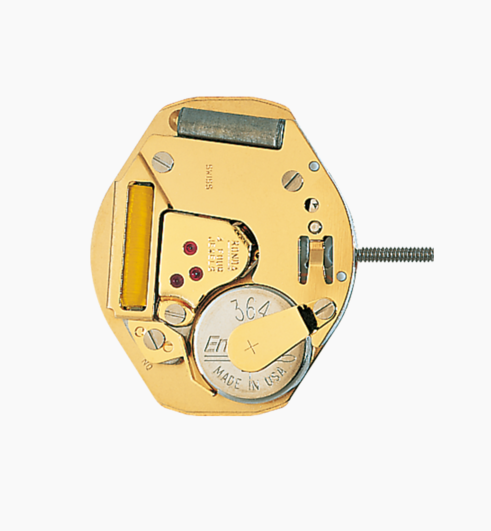In some of our latest watches, we have chosen a Swiss made Ronda movement. However, there are different variants of the same movement, and unfortunately, some brands have errors in how they label and market their watches with "SWISS MOVEMENT". Let's dive into the details.
Some Ronda quartz movements are labeled "Swiss Parts," while others are labeled "Swiss Made." What exactly is the difference, apart from one costing twice as much?
In our recent watches, we have used a Ronda 762, but there are several different versions of the caliber 762. There is a version called 762E which is nickel-plated with 1 jewel. This can be "Swiss Made" or "Swiss Parts". The caliber 762 without "E" is gold-plated with 4 jewels and is only listed as "Swiss Made".
What do the two different terms mean:
Swiss Parts
This marking indicates that the movement uses components produced in Switzerland, but are assembled in another country.
Swiss Made
A movement is considered Swiss if:
- Its technical development is carried out in Switzerland;
- It is assembled in Switzerland;
- The final inspection is done in Switzerland;
- 60% of the production costs are incurred in Switzerland;
- 50% of the value of all components is Swiss-produced, excluding assembly.
The designation "Swiss movement" can be placed on watches containing a Swiss movement (Swiss Made). The rules for using the term are that "movement" must be written in full (mvmt / movt is not allowed) and the text must have the same font, size, and color as the designation "Swiss".
It is not allowed to label "Swiss Parts" movements with "Swiss movement," but unfortunately, there are many examples where this is done anyway.
How can you tell the difference?
For an ordinary consumer, it can be challenging to see the difference between "Swiss Made" and "Swiss Parts" just by looking at the watch. On the Ronda 762 we have used, you can see the difference if you open the back cover and look at the movement. Ronda 762 Swiss Made is gold-plated with 4 jewels, while the Swiss Parts variant is nickel-plated (silver-colored) and marked "Swiss Parts".

Why use "Swiss Made" instead of "Swiss Parts" even though it is much more expensive?
Quality: "Swiss Made" movements are often considered to be of higher quality due to the strict requirements for production and final inspection in Switzerland. This ensures that each movement meets high standards for precision and reliability.
Value: Watches with Swiss-produced movements have a higher perceived value and can therefore achieve better prices in the market. They are often seen as a symbol of quality and craftsmanship.
Customer Experience: Consumers who buy watches with "Swiss Made" movements often experience a sense of security and satisfaction with their investment.
Brand Image: Using "Swiss Made" movements can strengthen the brand's image as a premium producer of high-quality watches, which can be crucial in a competitive market.
In the end, the choice between "Swiss Made" and "Swiss Parts" is a balance between cost and quality. For us, there was no doubt when we first chose a new quartz movement, we had to choose "Swiss Made" over "Swiss Parts," even though the watches would have been cheaper to produce by choosing the latter.
I hope you became a bit wiser from reading this. Feel free to write to us if you have any questions.



